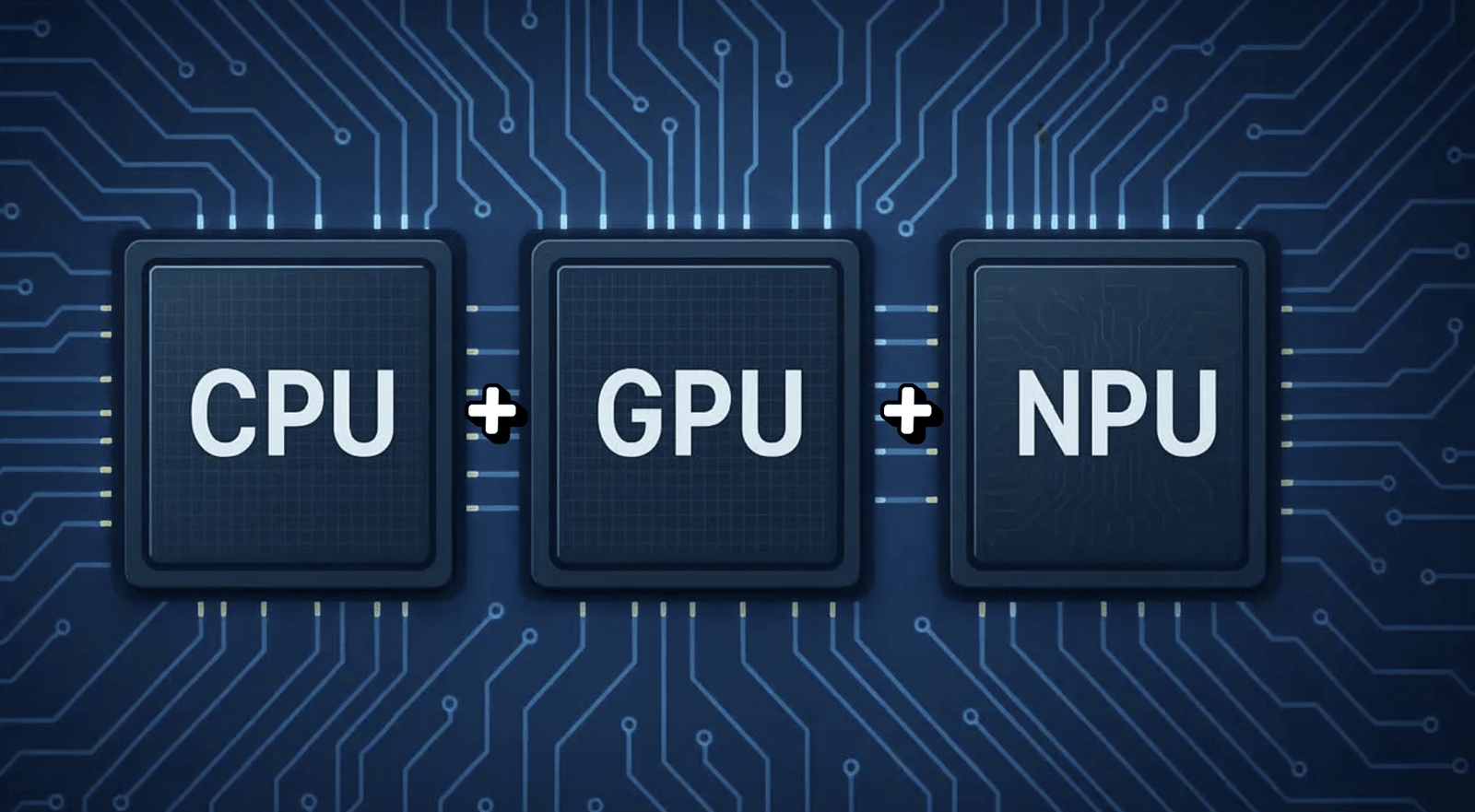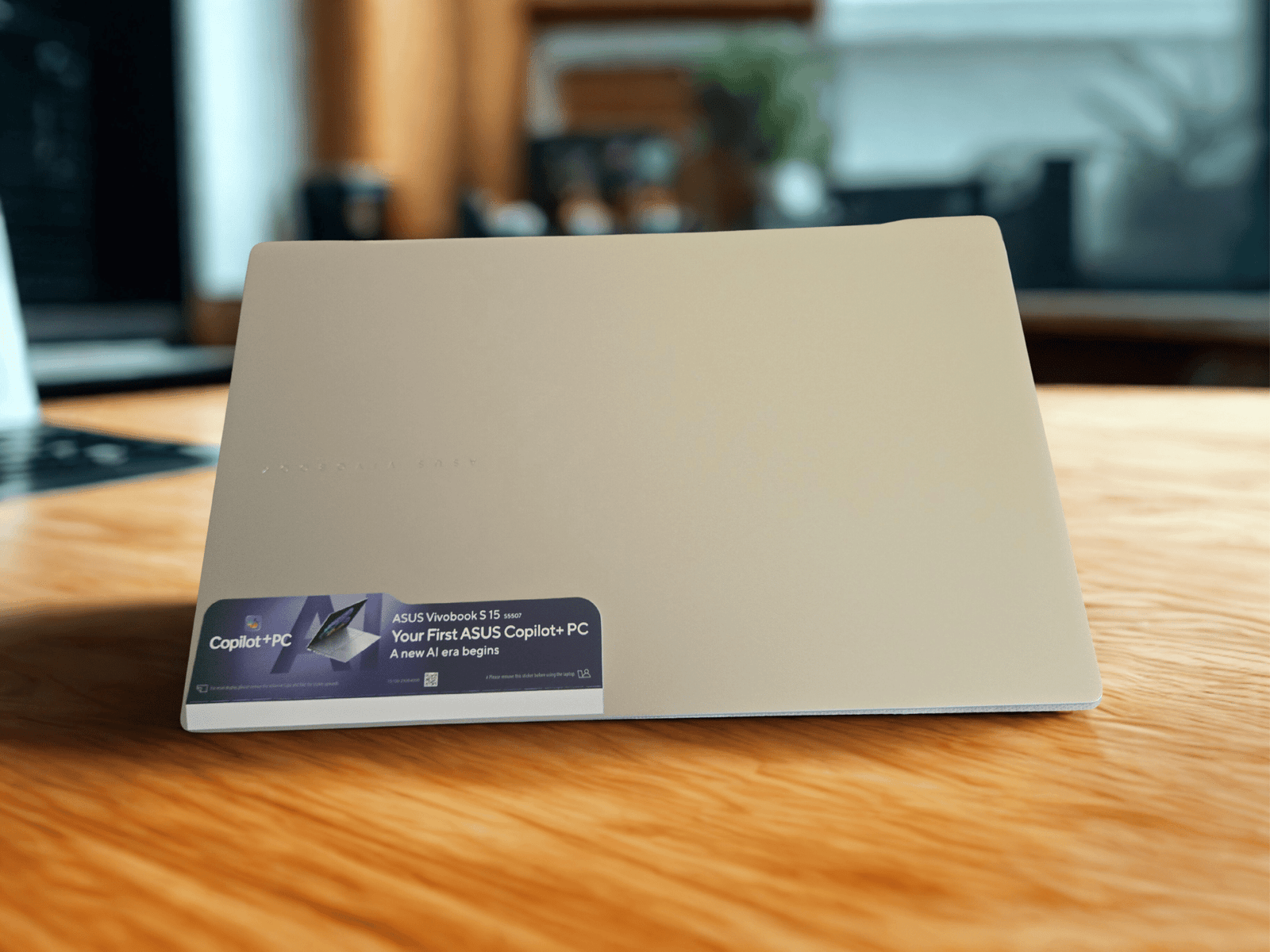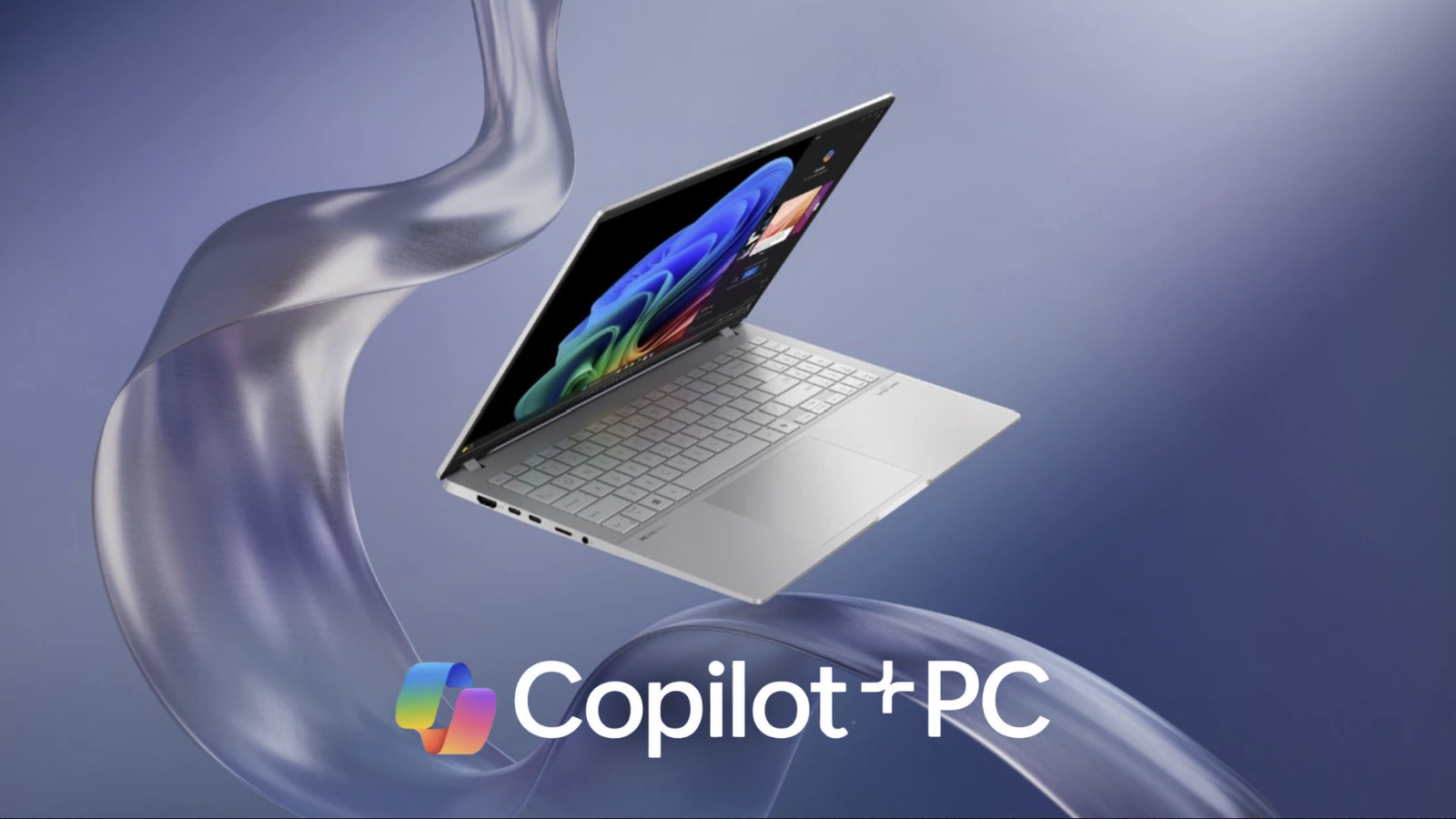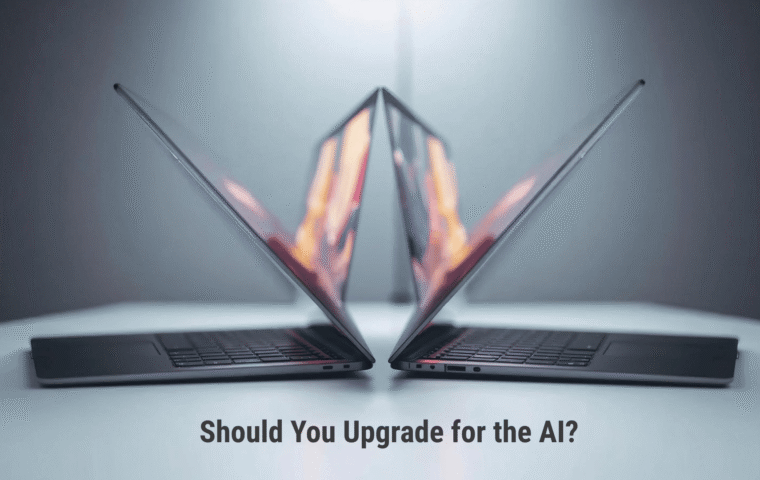A Copilot+ PC is a new class of Windows 11 devices designed with powerful on-device AI capabilities. These aren’t just upgraded laptops — they’re purpose-built to handle advanced AI tasks directly on the hardware, without relying solely on internet-based processing. That means when you get Copilot+ PC, you will get faster performance, enhanced productivity, and more intuitive user experiences. Welcome to the era of the Copilot+ PC!
What sets Copilot+ PCs apart?
Copilot+ PCs are powered by next-gen NPUs (Neural Processing Units), built to efficiently handle AI workloads alongside the CPU and GPU. Combine that with Windows 11’s built-in AI assistant — Microsoft Copilot — and you’ve got a machine that actively learns your preferences, improves your workflow, and makes multitasking a breeze.

The difference between a Copilot+ PC and a traditional Windows PC isn’t just under the hood — it’s in how you use your computer every day. These new devices bring AI to the forefront of your experience. Below are just a few features that come together with a Copilot+ PC:
- Instant Recall: Search your entire PC history using natural language. Want to find that chart you saw in a PowerPoint last week? Just ask.
- Cocreator: Use AI to generate or edit images in real time with text prompts — all processed locally.
- Live Captions with Translation: Instantly translate spoken language from videos and calls — even offline.
- Battery Efficiency: Thanks to NPU optimization, many Copilot+ PCs deliver all-day battery life (some promise up to 20+ hours).
- Security by Design: With Windows Hello, Pluton security chips, and on-device AI, you’re getting both performance and peace of mind.
Check out our post on differences between Copilot+ PCs and traditional Windows PCs for full in-depth comparison that will help you decide if it’s time to upgrade.
Who Are Copilot+ PCs For?
Whether you’re a content creator, student, remote worker, or simply someone who wants a faster, smarter Windows experience, a Copilot+ PC can elevate how you work and learn. Students can easily summarize lectures, translate on-screen video content, and organize study materials using AI-enhanced tools. Professionals benefit from features like Recall for instantly finding past work, natural language commands to draft documents, and automation tools that streamline repetitive tasks. Even casual users will notice smoother multitasking, improved performance, and smarter assistance built right into Windows.
Personally, I find myself fitting into all these categories — I’m a learner, a blogger, and someone who’s deeply exploring what these new AI-powered tools can do. In fact, this is what sparked my interest in sharing my own journey of getting a Copilot+ PC, which I’ll talk about next.
Copilot+ PC Quick Facts & Insights
What is an NPU, and why does it matter?
A Neural Processing Unit (NPU) is a dedicated chip designed to accelerate artificial intelligence tasks, like real-time translation, image generation, and summarizing text — all directly on your device. This offloads the work from the CPU and GPU, resulting in faster AI performance with better power efficiency.

The power of an NPU is measured in TOPS (Trillions of Operations Per Second). The higher the TOPS, the more AI operations the chip can perform every second. Here’s a quick breakdown:
- <10 TOPS: Found in older or entry-level NPUs; not enough to run advanced AI features locally.
- 10–30 TOPS: Suitable for light AI tasks like voice assistants or basic object recognition.
- 30–45 TOPS: Ideal for modern AI-powered experiences like Recall, Cocreator, and Live Captions with Translation — all of which are key features in Copilot+ PCs.
At launch, Microsoft has made it clear: a minimum of 40 TOPS is required to qualify as a Copilot+ PC.
The NPU is what makes Copilot+ PCs so different. It enables real-time, private, and offline AI capabilities — all without draining your battery or requiring constant internet access. This is the leap that brings true on-device AI to Windows laptops.
What Processors Do Copilot+ PCs Use?
Currently, there are three processor families that power these Copilot+ PCs:
- Snapdragon® X Series by Qualcomm
ARM-based chips like the Snapdragon X Elite and X Plus deliver up to 45 TOPS of AI performance and are optimized for long battery life. - AMD Ryzen™ AI 300 Series
Featuring AMD’s latest NPU (based on XDNA 2 architecture), these chips bring up to 50 TOPS, making them the most AI-capable x86 processors to date. - Intel® Core™ Ultra 200V Series
Intel’s latest Core Ultra chips feature a dedicated NPU and hybrid architecture, designed for seamless AI acceleration with broad compatibility across Windows apps.
Each processor line brings its own strengths, but all are designed to meet the minimum 40+ TOPS AI performance standard that defines a true Copilot+ PC.
Do Copilot+ PC Features Work Offline?
Yes — and this is one of the biggest advantages of a Copilot+ PC. Unlike traditional AI features that rely heavily on cloud servers, many Copilot+ capabilities are processed directly on the device using the Neural Processing Unit (NPU). That means you can access AI-powered tools like Recall, Cocreator, and Live Captions with translation without needing to be connected to the internet.
This offline functionality enhances privacy, speeds up performance, and ensures your productivity isn’t limited by Wi-Fi availability — whether you’re traveling, working from a remote location, or simply want to save bandwidth. This local AI processing not only enhances speed and privacy, but also contributes to longer battery life and more responsive interactions.
Who makes Copilot+ PCs?
Copilot+ is a Microsoft initiative, but the PCs themselves are made by trusted hardware partners like:
- ASUS (like the Vivobook model I’m using!).
- HP, Lenovo, Dell, Samsung.
- Microsoft itself (Surface Laptop and Surface Pro).
How much does a Copilot+ PC cost?
Most Copilot+ laptops start around $1,000 to $1,200 USD (or approx. $1,400 to $1,600 CAD). High-end models aimed at creators and professionals (like OLED displays or 32GB RAM) can go up to $2,000+. You’re paying for premium AI hardware, ultra-long battery life, and next-gen performance.
Do I Need a Microsoft 365 Subscription to Use a Copilot+ PC?
Not necessarily — it depends on which features you want to unlock. Many of the built-in Copilot+ PC features — such as Recall, Cocreator, and Live Captions with Translation — work without requiring a Microsoft 365 subscription. These run directly on the device’s NPU (Neural Processing Unit) and are available to all users out of the box, even without an internet connection.
However, if you want to use Microsoft Copilot inside apps like OneNote and OneDrive for deeper productivity, then you’ll need a Microsoft 365 subscription – either a personal plan with Copilot Pro or a business license that includes Microsoft 365 Copilot. For a breakdown of each plan and tips on getting the most value, check out my guide: Microsoft 365 Subscriptions Explained.
My Copilot+ PC Journey and First Impressions
Deciding between a regular Windows 11 laptop and a Copilot+ PC wasn’t easy. I spent a lot of time comparing features, performance differences, and long-term value. But after researching the benefits of AI integration, I chose to take the leap — and I’m glad I did. I went with the ASUS Vivobook S 15 S5507QA Copilot+ PC, and the experience so far has been nothing short of transformative.

Unboxing the device, I immediately noticed its sleek, modern design with a thin bezel display and a sturdy, well-built chassis. The keyboard feels responsive, and the overall build quality makes it clear this laptop was designed for both performance and portability. From the initial power-up to configuring Microsoft 365 and signing into OneDrive for accessing my files, I could tell this wasn’t just another Windows laptop — it felt like a real productivity partner. I followed a step-by-step routine: connected to Wi-Fi, signed in with my Microsoft account, and instantly had access to cloud storage and Copilot-powered AI features. I highly recommend checking out my posts on OneDrive to better understand cloud syncing, and my Copilot guide to see how AI can truly enhance your day-to-day productivity.
Setting up the Copilot+ PC was more than just adjusting a few preferences — it adapted to the way I work. One of the first things I did was personalize my desktop, which is a key step in making the device truly your own. I cover that process in more detail in my post Customize Your Windows 11 Desktop. For those who are just getting started and would like to know what to expect when turning on their new laptop for the first time, our Getting Started with Windows 11 guide is a must-read to ensure a smooth onboarding process.
As for the value side, I purchased my Asus Vivobook Copilot+ PC at Best Buy, taking advantage of great deals—including the option to finance it through Fairstone at checkout. I’ve documented the full experience in Buying Your First Copilot+ PC: My Experience from Store to Setup, where I share everything from researching models and making the purchase to unboxing and optimizing the setup for peak performance.
Personal Opinion about Copilot+ PCs
Honestly, I’m very impressed and truly satisfied. I see myself reflected in every use case I write about — from learning and note-taking to writing blog posts and researching SEO strategies. And this is just the beginning of my journey!
Microsoft and its partners are already teasing additional AI features that will roll out over time — and owning a Copilot+ PC now puts you on the front line of this transformation. Expect more Copilot-powered tools, better language models, and ever-smarter personalization.
The Copilot+ PC isn’t just a laptop with AI features — it’s a glimpse into the future of computing. If you’re ready to experience what intelligent performance truly feels like, this might be the best time to make the leap.




